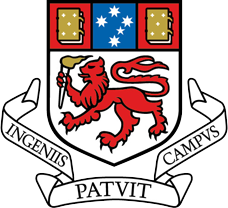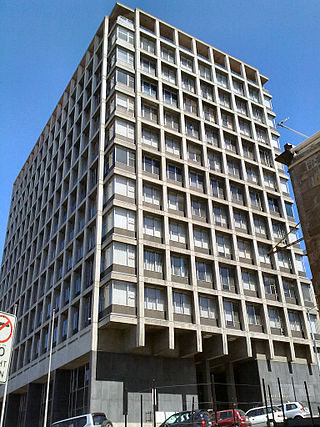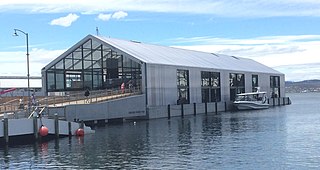
Hobart is the capital and most populous city of the Australian island state of Tasmania. Home to almost half of all Tasmanians, it is the southernmost and least-populated Australian state capital city, and second-smallest if territories are taken into account, before Darwin, Northern Territory. Hobart is located in Tasmania's south-east on the estuary of the River Derwent, making it the most southern of Australia's capital cities. Its skyline is dominated by the 1,271-metre (4,170 ft) kunanyi/Mount Wellington, and its harbour forms the second-deepest natural port in the world, with much of the city's waterfront consisting of reclaimed land. The metropolitan area is often referred to as Greater Hobart, to differentiate it from the City of Hobart, one of the seven local government areas that cover the city. It has a mild maritime climate.

Casey Station, commonly called Casey, is one of three permanent stations and research outposts in Antarctica managed by the Australian Antarctic Division (AAD). Casey lies on the northern side of the Bailey Peninsula overlooking Vincennes Bay on the Budd Coast of Wilkes Land in the Australian Antarctic Territory, a territory claimed by Australia. Casey is 3,880 kilometres (2,410 mi) due south of Perth, Western Australia.

The University of Tasmania (UTAS) is a public research university, primarily located in Tasmania, Australia. Founded in 1890, it is Australia's fourth oldest university. Christ College, one of the university's residential colleges, first proposed in 1840 in Lieutenant-Governor Sir John Franklin's Legislative Council, was modelled on the Oxford and Cambridge colleges, and was founded in 1846, making it the oldest tertiary institution in the country. The university is a sandstone university, a member of the international Association of Commonwealth Universities, and the Association of Southeast Asian Institutions of Higher Learning.

Bellerive Oval, known commercially as Blundstone Arena for sponsorship reasons, is a cricket and Australian rules football ground located in Bellerive, a suburb on the eastern shore of Hobart, Australia, holding 20,000 people it is the largest capacity stadium in Tasmania. It is the only venue in Tasmania which hosts international cricket matches.

Sullivans Cove is on the River Derwent adjacent to the Hobart City Centre in Tasmania. It was the site of initial European settlement in the area, and the location of the earlier components of the Port of Hobart.

North Hobart Oval is a sports venue in North Hobart, Tasmania. Formerly used primarily for Australian rules football widely regarded as the traditional home of Australian football in Tasmania. However since the 1950s it has also become one of the main soccer venues in Tasmania.

Cadbury's Chocolate Factory is the largest chocolate factory in the Southern Hemisphere, producing a company-record of over 60,000 tonnes of chocolate in 2021. Established at Claremont, Tasmania in 1921, the factory and surrounding model village estate marked Cadbury's first business expansion outside the United Kingdom. Cadbury's Claremont is currently owned by the multinational conglomerate Mondelēz International, which purchased Cadbury in 2010.
The Taste of Tasmania is Tasmania's largest food and wine festival. Established in 1988, the Festival operates from 28 December–3 January and will celebrate its 32nd year in 2022. The festival is held in Hobart's Salamanca Place and waterfront precinct. The main event venue has been the Princes Wharf No 1 Shed. The festival was run by the City of Hobart.

10 Murray Street was the address of the State Offices building in Hobart, Australia, and the name by which the building is frequently known. It was a Brutalist office building located behind Parliament House and close to Salamanca Place. The building was fully occupied by the State Government of Tasmania and is located next to Parliament House. They were directly linked via a skyway. 10 Murray Street was demolished in 2018 as part of the Parliament Square redevelopment.

The Hotel Grand Chancellor Hobart is a twelve-storey hotel located on the waterfront of Hobart, Tasmania, Australia.

The Institute for Marine and Antarctic Studies (IMAS) is a teaching and research institute of the University of Tasmania in Hobart, Tasmania. IMAS was established in 2010, building upon the university's partnership with CSIRO Oceans and Atmosphere and the Australian Antarctic Division in cooperative Antarctic research and Southern Ocean research.

Hobart City Hall is a public auditorium and concert venue in Hobart, Tasmania, which together with the Derwent Entertainment Centre forms one of the two major public venues in the city. It is also a commonly used emergency center during disasters such as the 2013 Tasmanian bushfires. Despite its name it is not the City of Hobart's seat of government, which is Hobart Town Hall – historically a matter of confusion.

The Brooke Street Pier is a floating pontoon building at Sullivans Cove in the waterfront area of the city of Hobart, Tasmania, Australia. It was constructed in 2014–15 at a cost of A$13 million. It weighs 5,300 tonnes and was Australia's largest floating building upon completion. It is connected to the Hobart shore at Franklin Wharf, near the base of Brooke Street. Primarily a ferry terminal, the architect has described it as a "tourism transport hub".

Robert William Morris-Nunn is an Australian architect.
The Prince of Wales Theatre was a theatre on Macquarie Street, Hobart, Tasmania from 1910 to 1987.

The Odeon Theatre is a historic former cinema and live entertainment venue in the city of Hobart, Tasmania, Australia.

The Paragon Theatre is a historic cinema and live entertainment venue in Queenstown, Tasmania, Australia.
Taroona Beach is a popular beach destination along the River Derwent in Taroona, Hobart, Tasmania. The south facing beach looks directly out to Storm Bay and the Tasman Sea, with views of the Derwent estuary, the City of Clarence on the eastern shore, Opossum Bay, South Arm, the Alum Cliffs and northern tip of Bruny Island. Taroona Beach is situated between Hinsby Beach and Crayfish Point, home of the Fisheries and Aquaculture Centre for the Institute for Marine and Antarctic Studies. Taroona Beach contains a boat ramp and is backed by Taroona Park which contains bathroom facilities, a skate park, scout hall, the Taroona Tennis Club, and the Taroona Bowls and Community Club.

The Avalon Theatre is a historic former Temperance Hall, theatre and cinema in Hobart, Tasmania, Australia.

The Glenorchy Art and Sculpture Park (GASP) is a sculpture park and boardwalk in Glenorchy, Tasmania, Australia. Commencing at Montrose Foreshore Community Park, GASP follows Elwick Bay's foreshore, terminating at Wilkinsons Point. GASP is in close proximity to the MyState Bank Arena, Elwick Racecourse and the Museum of Old and New Art (MONA) in Berriedale.

















